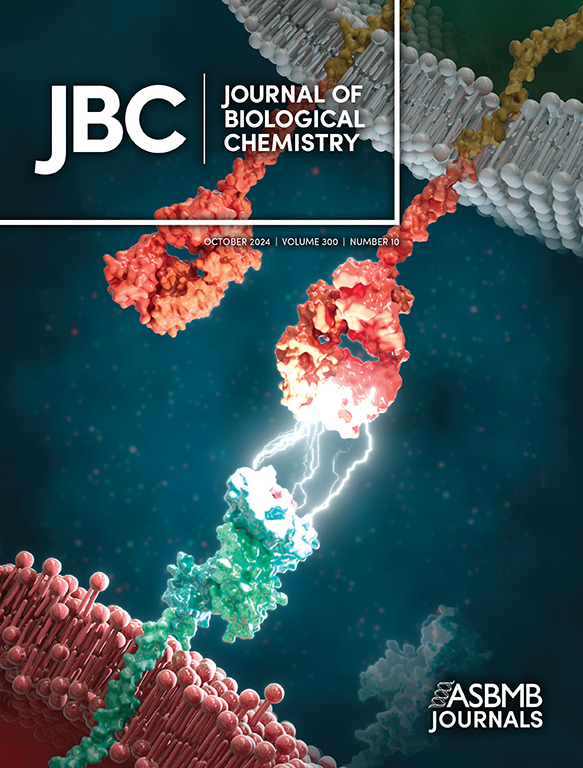samhd1缺陷单核细胞触发I型IFN反应的能力取决于cGAS和线粒体DNA
IF 4
2区 生物学
Q2 BIOCHEMISTRY & MOLECULAR BIOLOGY
引用次数: 0
摘要
在人类中,无菌α基序和含组氨酸-天冬氨酸结构域蛋白1 (SAMHD1)的突变导致I型干扰素病的发展,即aicardii - gouti本文章由计算机程序翻译,如有差异,请以英文原文为准。
The ability of SAMHD1-deficient monocytes to trigger the type I IFN response depends on cGAS and mitochondrial DNA
In humans, mutations in sterile α motif and histidine-aspartate domain–containing protein 1 (SAMHD1 ) lead to the development of a type I interferonopathy known as Aicardi–Goutières syndrome (AGS). AGS can present with a variety of severe phenotypes in patients, and a hallmark of this disease is chronic activation of type I interferon (IFN) signaling. However, the mechanism through which type I IFN signaling is activated in the absence of functional SAMHD1 is not known. Here, we investigated the molecular pathways that lead to type I IFN signaling activation in the absence of SAMHD1. Our investigations revealed that chronic activation of type I IFN signaling in SAMHD1 -knockout(KO) monocytes is cyclic GMP–AMP synthase (cGAS)-dependent. Analysis of other nucleic acid sensors showed that type I IFN signaling in SAMHD1 -KO cells is not dependent on melanoma differentiation-associated protein 5 (MDA5) or retinoic acid–inducible gene I (RIG-I). In agreement with our observation that type I IFN signaling is dependent on cGAS, two inhibitors of the cGAS–stimulator of IFN genes pathway, G140 and H151, effectively prevented type I IFN activation in SAMHD1 -KO monocytes. We also found that type I IFN signaling in SAMHD1 -KO monocytes is dependent on type I IFN receptor expression. Further exploration revealed mitochondrial malfunction in SAMHD1-KO monocytes that is likely to leak mitochondrial components into the cytoplasm. Overall, our work suggests that genetic knock out of SAMHD1 leads to mitochondrial disfunction, resulting in the presence of mitochondrial DNA in the cytoplasm, which triggers cGAS and the type I IFN response.
求助全文
通过发布文献求助,成功后即可免费获取论文全文。
去求助
来源期刊

Journal of Biological Chemistry
Biochemistry, Genetics and Molecular Biology-Biochemistry
自引率
4.20%
发文量
1233
期刊介绍:
The Journal of Biological Chemistry welcomes high-quality science that seeks to elucidate the molecular and cellular basis of biological processes. Papers published in JBC can therefore fall under the umbrellas of not only biological chemistry, chemical biology, or biochemistry, but also allied disciplines such as biophysics, systems biology, RNA biology, immunology, microbiology, neurobiology, epigenetics, computational biology, ’omics, and many more. The outcome of our focus on papers that contribute novel and important mechanistic insights, rather than on a particular topic area, is that JBC is truly a melting pot for scientists across disciplines. In addition, JBC welcomes papers that describe methods that will help scientists push their biochemical inquiries forward and resources that will be of use to the research community.
 求助内容:
求助内容: 应助结果提醒方式:
应助结果提醒方式:


